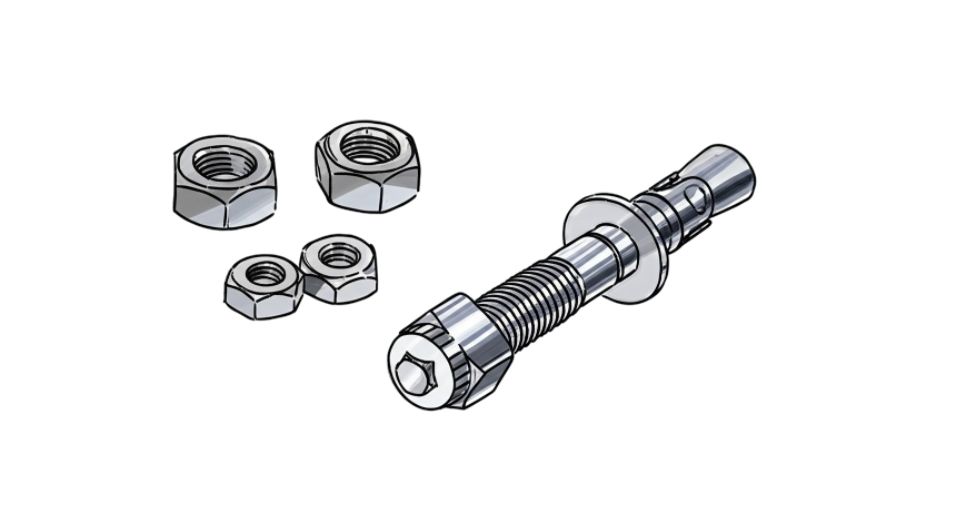
Jul 30, 2025

Metastat Insight latest research report provides an insightful analysis of trends surrounding the Anchoring Fasteners Market, illuminating the industry's subtle turns and hidden movements that determine its course. This extended treatment looks below the surface for the mechanisms driving change, taking guidance from eyewitness accounts, maker influence, and changes in demand witnessed across separate geographies and industries. Far from being a set of surface-level data, the report is concerned with the actual-world implications of where anchoring fasteners are situated within bigger construction, manufacturing, and infrastructural contexts.
Global Anchoring Fasteners market is estimated to reach $3,247.07 million in 2025 with a CAGR of 4.3% from 2025 to 2032.
In the supply chain, oscillations have highlighted production dynamics and material acquisition strategies. These fluctuations are not isolated; they mirror larger shifts in how industries adapt to internal efficiency pressures and external limitations. The trend towards increased flexibility in production techniques, cited by respondents interviewed in the report, has resulted in subtle yet significant improvements in product homogeneity and delivery timelines. Here, the issue is not merely producing a product, but one that fits specifications with new construction methods calling for flexibility without sacrificing load-bearing capability.
What comes through in the Metastat Insight research is a portrait of manufacturers evolving with design innovations in response to shifts in core engineering practices. Advances in architecture and redevelopments in city planning strategies have helped bring about a new emphasis on how anchoring fasteners are incorporated into structure blueprints. This is not a question of designing products to suit transitory requirements; instead, it demonstrates a conscious and incremental shift toward championing structural safety and long-term sustainability and, as a consequence, has encouraged incremental improvements in fastening geometries and anchoring systems.
In procurement circles, the selection criteria have quietly changed. Where, in the past, raw strength and endurance would have been enough selling features, the purchasing decision now more often includes a combination of product traceability, compliance records, and supply consistency. These aspects, though not central in the past, have worked their way to the forefront of buying considerations. Clients increasingly look for partners who are able to provide a combination of visibility and logistical continuity, a trend that has motivated some producers to reconsider their own certification and sourcing procedures. This evolution, although subtle, carries important competitiveness and perceived value implications for commercial arrangements.
Geographical differences have also placed further emphasis on the different manners in which anchoring fasteners are used in diverse environments. Climate, seismism, and regional building codes function in unique ways to form demand, triggering customized design solutions that respond to the subtle requirements of regional projects. These distinctions are not academic, but rather represent a sophisticated awareness of environmental interactivity with structural materials. Manufacturers reacting to these diverse needs are not simply producing parts they are facilitating infrastructure better attuned to its physical environment, in turn granting increased durability and longevity to final products.
Behind this advance is a conversation between tradition and innovation. Whereas traditional building methods continue to shape contemporary practice, particularly within areas of rich architectural heritage, contemporary materials and fastening technology are being subtly integrated into conventional practice. The report illustrates how this merging has created innovative hybrid solutions that preserve aesthetic integrity while conferring modern performance. These changes are not invariably page-one news but leave a lasting influence on the selection and deployment of materials in restoration work as much as in new construction referencing classic styles.
Model distribution has also been quietly recalibrated. The transition away from hub-and-spoke warehousing toward more aggressive regional distribution models is testimony to increased insight into the timing of projects and contractor expectations. The flexibility provided by this model has enabled quicker project windows and minimized the risk of delays from long lead times. It is, in large part, not only the product but the delivery method that has acquired strategic importance.
And maybe one of the most subtle things represented in the Metastat Insight report is the feedback loop between product development and field application. Installers and site engineers, through normal contact with these fasteners, give feedback that ultimately affects how new versions are developed and perfected. It's a low-key loop of learning and evolution, where frontline experience figures into design adjustments that propagate outward through the supply chain.
The Anchoring Fasteners Industry, as developed by this careful documentation, is not one of numbers or estimates. It is an indication of the countless choices made in workshops, job sites, and procurement offices each adding incrementally to an industry making gradual change. The Metastat Insight report manages to tell this narrative not in terms of high-profile declarations but by paying meticulous attention to the nuances of movement, making it a must-read for those interested in where the industry currently is, and where it may be going next.
In conclusion, the report provided by Metastat Insight presents a thoughtful and highly textured description of the Anchoring Fasteners Market, basing its insights on actual-world changes and quietly profound transformations. In this view, the market is not presented as a fixed industry but as a fluid locus of design, functionality, and strategic development.
Drop us an email at:
Call us on:
+1 214 613 5758
+91 73850 57479